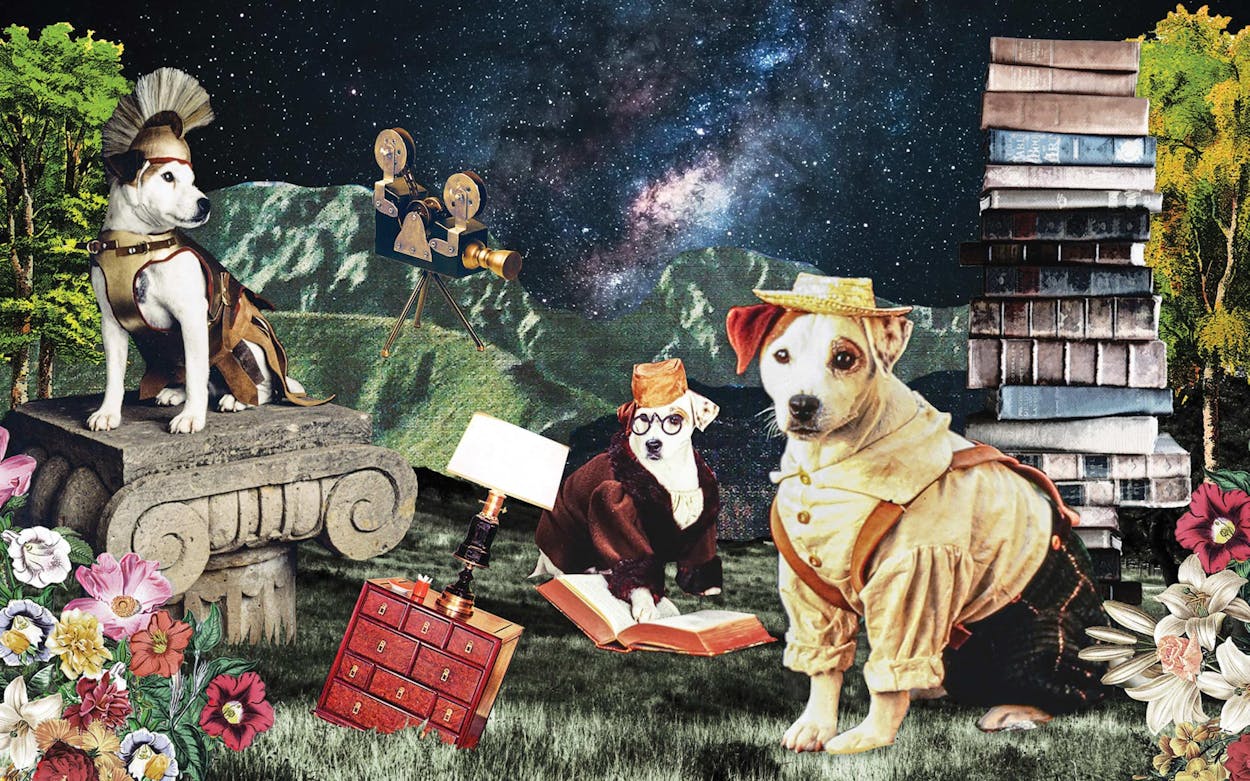Texas has plenty to bark about when it comes to fictional canine heroes. There’s Old Yeller, the loyal Lab mix whose tragic end has made schoolchildren weep for six decades, and everyone’s favorite do-gooder Benji, whose antics have made him a box office smash. And of course there’s Hank the Cowdog, the self-styled head of ranch security who’s forever on patrol (when he’s not sleeping on his gunnysack) at his Panhandle spread in Ochiltree County. But only one pooch took children on adventures through classic works of literature: Wishbone.
Set in the fictional Texas town of Oakdale, Wishbone, which first aired on PBS in 1995, followed a plucky Jack Russell terrier as he daydreamed his way into literary masterpieces. Wishbone’s fantasies, paralleling his human family’s modern-day experiences, transported him to places like ancient Greece, where he envisioned himself as Odysseus, and events like the Hundred Years’ War, where he took on the role of Louis de Conte, a page of Joan of Arc’s.
There wasn’t anything on television quite like Wishbone at the time. It was blessed with deep pockets for elaborate set designs and costumes. And the show took its young viewers seriously. Anchored by writing that didn’t coddle, Wishbone introduced kids to complex characters and themes while still being lighthearted (and, yes, adorable). During its short two-season run, the series—helmed by a Dallas-based crew and numerous Texas thespians—earned a Peabody Award and four Daytime Emmys.
Wishbone remains cherished (and often memed) by fans today, and a new generation of admirers may soon be introduced to the brainy pup. In July Universal Studios and Mattel Films announced that the “little dog with a big imagination” would be making his way to the silver screen in a project produced by Oscar-winning director Peter Farrelly, though it’s unclear whether any of the original cast or crew will be involved. To commemorate the show’s twenty-fifth anniversary, Texas Monthly spoke with the writers, producers, cast, and crew of the original series for an oral history recounting how our state’s favorite literature-loving terrier got his own story.
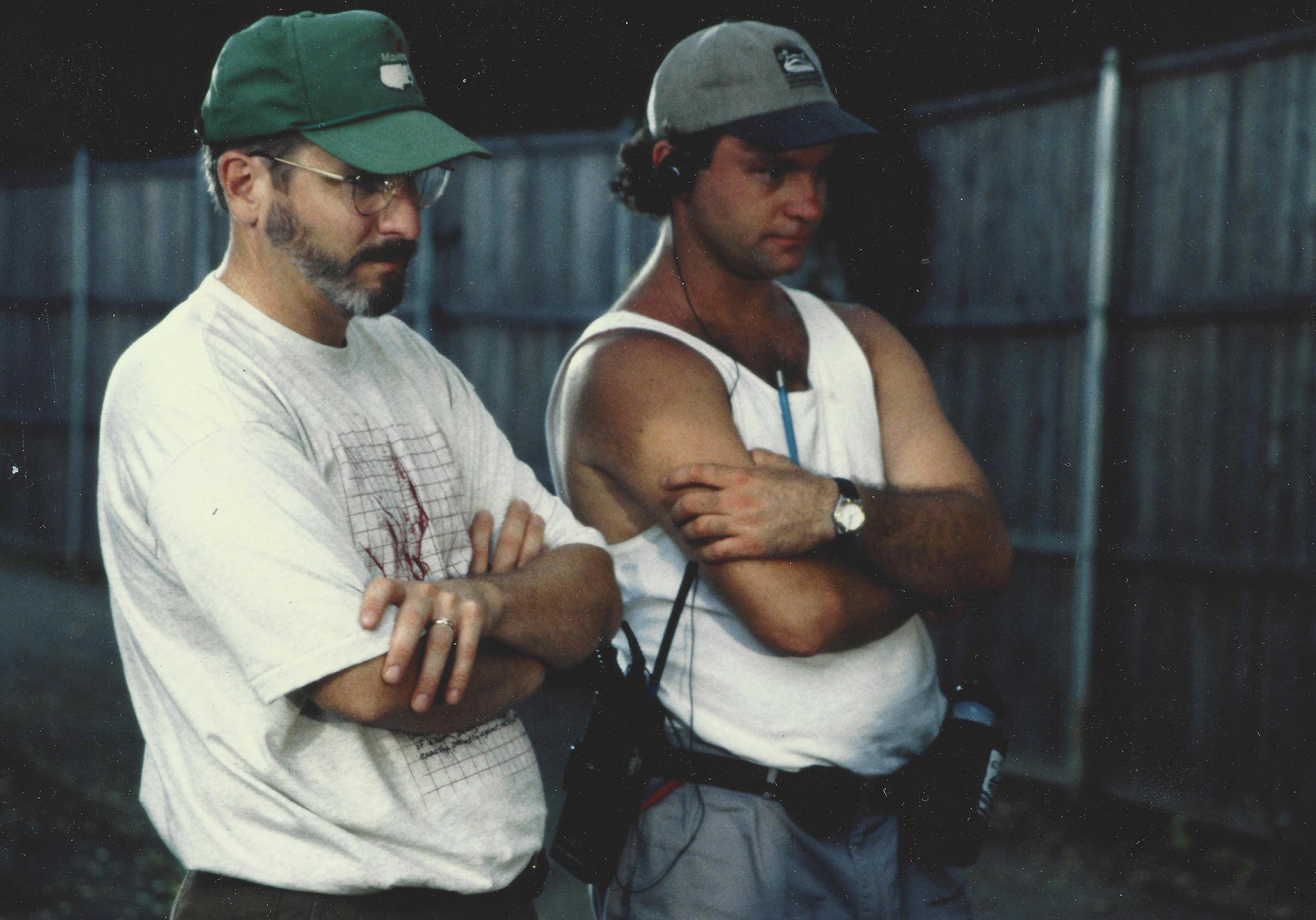
The Idea
Rick Duffield was the creator and executive producer of Wishbone: In 1992 I had been wanting to do a show for kids, and I wanted to use a dog as the main character. I had grown up on Lassie, Andy Griffith. And there was a certain sensibility that I felt was missing on television for my own kids, who at the time were in elementary and middle school.
Betty Buckley was the producer of Wishbone: Rick held some mini creative conferences on this idea. And at one point, we were going to have a bulldog that lived in New Orleans. Very different story. At another point Wishbone was going to be named Knuckles. And Tim Cissell (who later cowrote the theme song) made this big appeal, like, “You cannot call the dog Knuckles.”
Stephanie Simpson was the showrunner and head writer of Wishbone: I was living in New York, working as a playwright and dancer. My mom [who lived in the Dallas area] happened to teach Rick’s son, Joe, in drama class. I was invited to come to a weekend brainstorming with my mom, and at that point, the dog wasn’t called Wishbone. He was just a dog who loved music. I didn’t hear anything for about a year. Then I got a call saying, “We want to do that show, and we’d like you to help us figure it out.” So when I arrived, the idea was that he was a lucky dog named Wishbone. Whenever you got close to him, he made good things happen for you. I went off and tried to write a story with that idea in mind and didn’t get very far. Having a dog that was lucky made everything happen too easily.
Rick Duffield: In the latter part of ’93, I had this idea: there’s this little dog in a mundane situation, but he could imagine himself being a hero, like a big hero, in a big story. And I had this old book called Masterpieces of World Literature. It was sitting on the credenza, and I was thinking about all this and staring at that book, and I just went, “Oh my gosh.”
Stephanie Simpson: The first story that came to mind was Oliver Twist because of Oliver saying, “Please, sir, [I want some more].” It just seemed like a natural fit for a dog, being very dramatic, pacing around his bowl as if he’ll never be fed again. Rick agreed, and I went to writing a pilot script with the idea of creating a contemporary story that would remind Wishbone of a classic work of literature and would give kids an entryway into these books that often seemed like they were so grand and far away.
Rick Duffield: Dick Leach, the owner of Lyrick Studios [the Allen-based studio that made Barney], said, “You might have something.” Before we pitched the show to networks, he wanted us to make a proof-of-concept trailer. But first we had to find the dog.
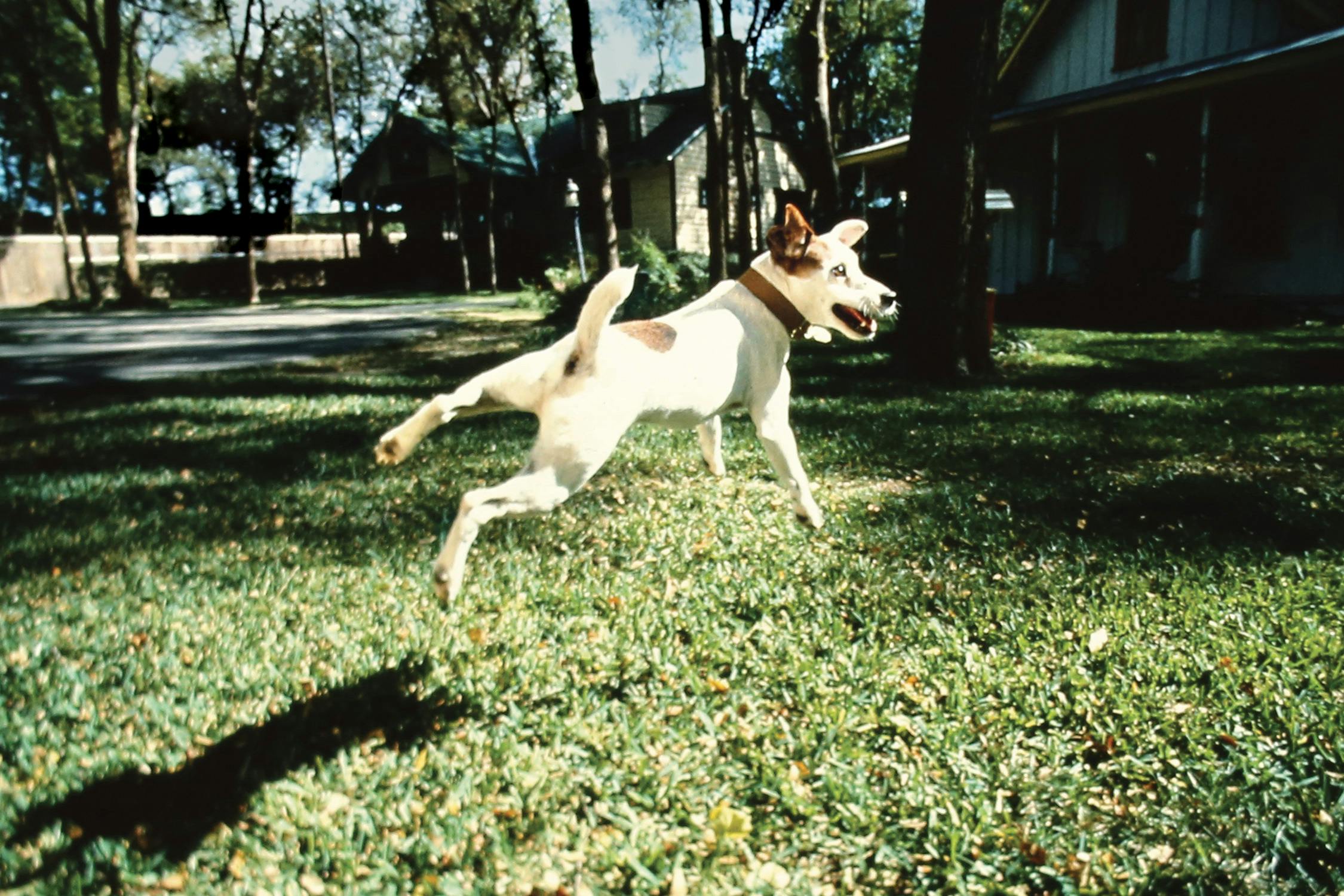
Casting Wishbone
Betty Buckley: We held the audition outside L.A., in the country. We needed to find a hotel that had grass, because when you’re auditioning dogs, they mark stuff, right?
Rick Duffield: We went to a Marriott Courtyard up in the Santa Clarita Valley. And this guy had pulled together a list of trainers, and they brought in over a hundred animals, one by one, over two days. All kinds of dogs. I felt like I wanted a small dog, but I didn’t know what kind. I just knew that I’d find the dog if I saw it.
Betty Buckley: The very last dog that showed up was Soccer. Jackie Kaptan, his trainer, was actually out of town working on The River Wild. But he comes out with a friend of hers, another trainer, and he had him playing with the ball, and then he did his flip.
Rick Duffield: He could do a backflip! It was like, “Are you kidding me?” And he had this look. It was a calm, almost Zen look. He was perfect.
Jackie Kaptan was Soccer’s owner and trainer: Not every dog is made for Hollywood. It takes a special kind of dog that enjoys it. Soccer wasn’t the smartest dog I’ve ever trained, but he had that willingness to please. And he had a great heart. I mean, he’d walk on water for me.
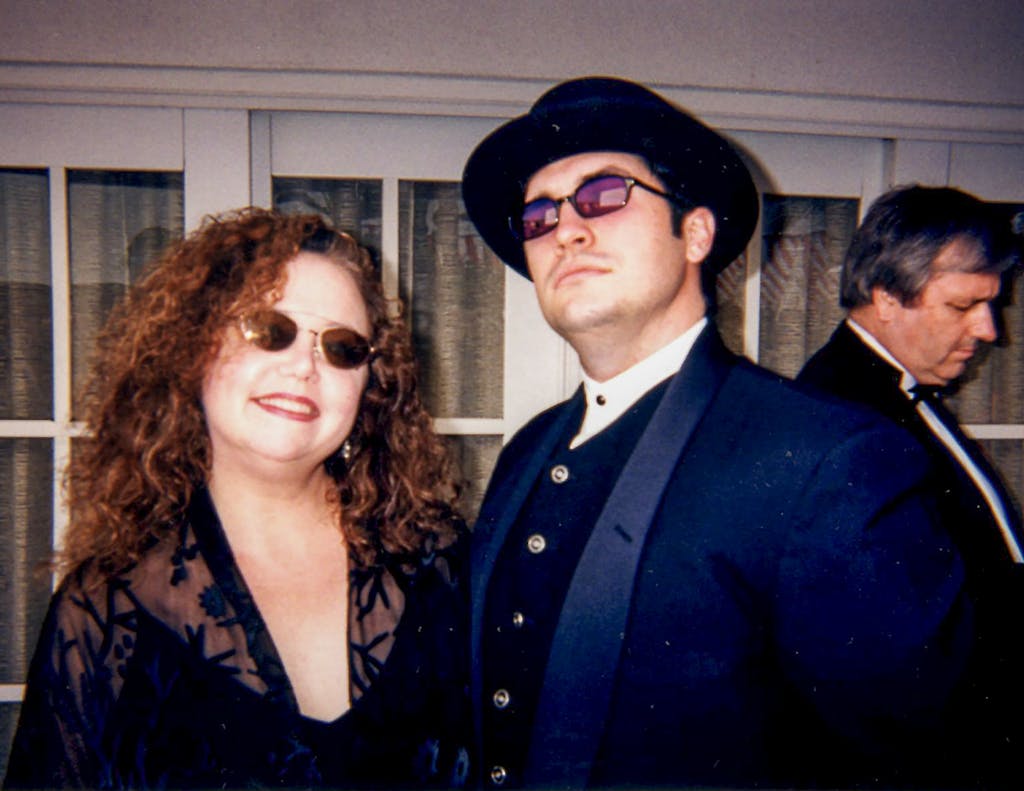
Finding Wishbone’s Voice
Rick Duffield: The agencies were sending me cassette tapes, and it was all these very serious actors, and they were performing as if they were doing Shakespeare. They didn’t stop to think about the dog. And the agent said, “I’m going to send a few more people that you should look at, and you can see them in person.” So they came to the house we were scouting for a location. The first guy didn’t work, and the second guy didn’t work, and then Larry walked in.
Larry Brantley was the voice of Wishbone: I was a brand-new wannabe actor in the Dallas–Fort Worth market. I had moved from Houston on January 1, 1993, had an agent for less than six months, and was doing what all starting actors do: working at a restaurant. I got a call from my agent, who said, “I’m going to send you on a voice audition.” I said, “Great. What is that?” And she patiently explained to me that this was for a pilot for a kids’ show. The main character was a dog, and I was going to try to be the voice of the dog.
When it was my turn to go in, I was very nervous. There was no microphone. Betty just hit the record button on a boom box. And right when I was supposed to do my audition, Jackie said, “Hey, guys, Soccer’s been working really hard. He needs a break.” And I thought that meant he needed to go outside. But she took this tennis ball from a pouch on her belt, and Soccer lost his mind. She tossed it to him, and I watched this dog begin to play a game of catch with himself. Without really thinking about it, I started verbalizing what I thought must be going through the dog’s head. This went on for maybe two minutes, then Jackie picked up the ball and put it back in her pouch. I looked over at Betty and Rick and said, “Okay, can we do the audition?” And Betty goes, “Oh, no, we did the audition.” And I thought, “I can’t believe I did that. I just blew it.”
Stephanie Simpson: It was really important that Wishbone felt like a kid himself so that he really was an avatar for a child and a child’s imagination. When you play things out as a kid, you don’t picture yourself being treated like a kid. You picture yourself being treated like the hero, like the grown-ups. Larry brought all of that kidlike energy and lively improvisational quality to it.
Larry Brantley: I was at my uncle’s cabin in the Smoky Mountains of North Carolina when my agent called. We spent the next hour and change going over the deal. Keep in mind, it was PBS money, but to a poor boy from East Texas, it was more money than I ever thought I would make as an actor. I was super happy to have this gig. And she said, “Listen, they don’t need you until next week. So finish out your vacation, have a good time, come home, and let’s get to work.” And I heard my agent hang up, but then another voice said, “Hang on, they’re going to pay you to talk on TV?” That’s when I realized that, because my uncle’s cabin was so far up in the boonies, it was a party line shared with four or five other cabins. So then I had another thirty-minute conversation with a total stranger about playing a dog on TV.
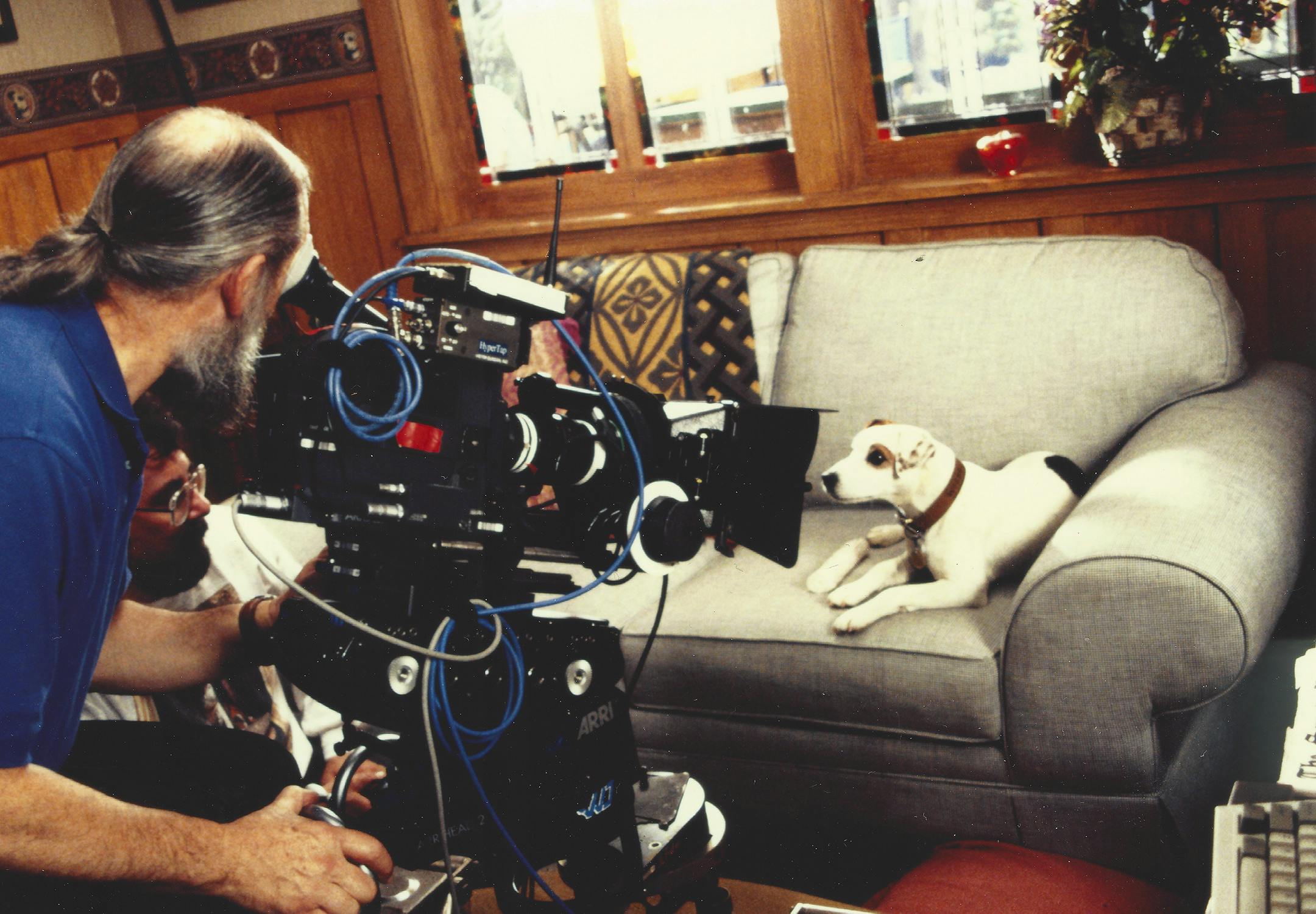
Production Begins
Rick Duffield: There were ten acres behind the office building that Lyrick Studios owned, so we went in there and built a backlot. We found some warehouse space and converted that into soundstages. That took all spring into summer. Meanwhile, we hired a couple of writers. We got Mo Rocca a few years out of college, and he and Stephanie started writing scripts.
Stephanie Simpson: I didn’t own a television at the time I started writing for Wishbone. I had never written a screenplay or a TV script. So I had to go to Borders and buy examples of screenplays to see what the formatting was and figure that out.
Mo Rocca, now known for his comedy work, got his start in TV by writing for Wishbone: We had this great base—these classic stories that people keep coming back to over and over again—and we had to distill those to thirty minutes, add a twin contemporary plot that would weave in and out of the classic story, and then see it through the eyes of a dog. It was like some crazy creative writing assignment assigned by a teacher on LSD.
Rick Duffield: I started working on the Oakdale characters [Wishbone’s owners, twelve-year-old Joe Talbot and his mother, a widowed librarian, Ellen Talbot; their quirky neighbor, Wanda Gilmore; and Joe’s friends, tomboy Sam Kepler and brainiac David Barnes] and developed them.
Christie Abbott played Sam Kepler: I was eleven when I went out for the show. I’d already done TV before and had been traveling out back and forth to L.A. Being on sets was pretty normal for me, but it was apparent that this was something very special and unique right away. The synergy of the cast and crew was pretty immediate.
Mary Chris Wall played Ellen Talbot: The film and television community in Dallas is quite tight. I had actually played Christie’s mom in a J. C. Penney commercial. But by 1994, I had been a working actor in Dallas for six years. So I took a trip to Los Angeles, and I remember thinking, “Maybe this would be a good move.” I was on the plane coming back to Dallas, and I said, “Dear God, if I’m supposed to stay in Dallas, I need a lightning bolt with my name engraved on the side.” And, I kid you not, the audition for Wishbone came the next day.
Betty Buckley: We created a company of actors called the Wishbone Players. When we would do casting, we would look and see what kind of theater they’d done. And people were just excited. I don’t think you get that in the bigger markets, where people are a little jaded and it’s about the paycheck.
Matthew Tompkins was in the Wishbone Players: Wishbone came along when there was a real flourishing of spectacular theater on stages in Dallas and Fort Worth. Just an explosion of young, hungry theater companies that provided a sort of homegrown roster of actors and actresses that the producers could pluck from almost instantly.
But this wasn’t, by any stretch of the imagination, a television hub. The only other big horse in town in those days was Walker, Texas Ranger. I was a part of that for completely different reasons, and it was a completely different show. But Wishbone and Walker were sort of a rite of passage for Dallas actors.
Rick Duffield: I was very set on respecting the literary material as much as possible. I really didn’t want us writing down, and I didn’t want the language to change so much that you wouldn’t recognize the original literary piece.
Stephanie Simpson: It was like a graduate program in literature just to write the show, which was incredible. We all learned more about writing and storytelling from doing that over and over again week after week than we could have learned in ten years of a classroom education.
Larry Brantley: I can’t think of one person that wasn’t a reader on that set, and I mean everybody. That was sort of the grit around which we built this pearl. Rick’s rules were never write down to kids, and never shy away from difficult subjects. We were dealing with themes in many of these books that were, quite frankly, complex, not necessarily black and white. But at the heart of it, we all realized that we were going to treat every single one of these classic stories with the reverence and respect it deserved.
Stephanie Simpson: The biggest challenge was keeping up the pace with our schedule: reading a four-hundred-page book in one night and then trying to figure out what the story was for the dog and another for the kids.
Mo Rocca: I was particularly proud of the third or fourth episode I wrote, about the legendary story of the origins of the Aztec people and also the story of Our Lady of Guadalupe, who is a great Catholic icon of Mexico. That was sort of woven in with a contemporary story involving a Latina grandmother. And my mother is Colombian, so that felt very personal to me…as a 26-year-old, I was able to do something like that.
Stephanie Simpson: We did a show called “Dances With Dogs.” I’m proud of that because it was a Lakota story that I wrote to the tribal elders and asked for permission to use that. The guys who came and played the Lakota warriors in the fantasy story but also who played the drum in the contemporary story were from Oklahoma, from the same town that my grandmother is from. So the authenticity of that was important to me. The actor who came and played the storyteller was a Navajo storyteller. There are very few representations of that culture on television, and especially at that time, that weren’t stereotypical.
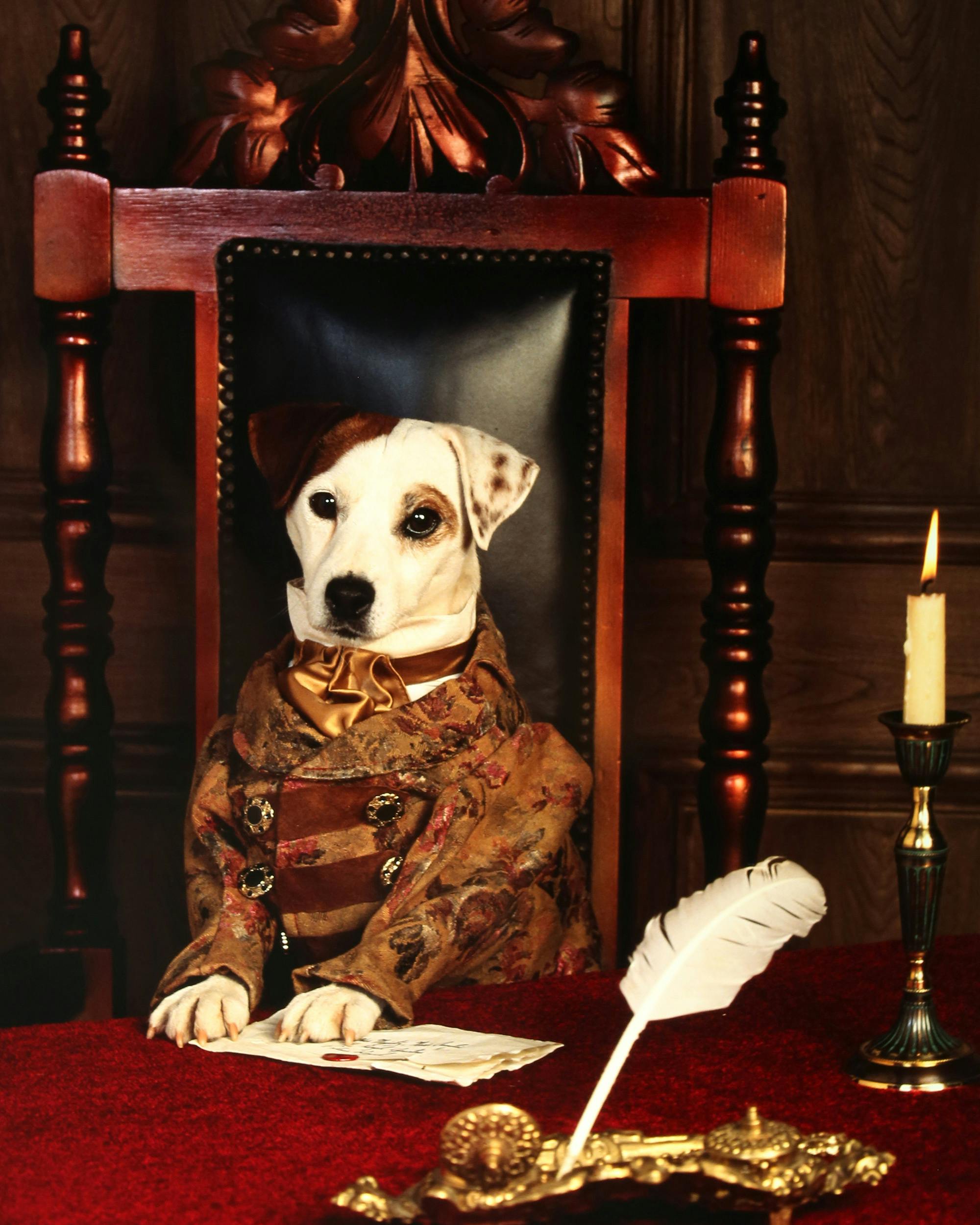
Shooting the Show
Caris Turpen was the visual effects supervisor: One day we got word that Jackie and the other trainers and the dog were arriving from Los Angeles. When they got there, we all trooped out into the parking lot. There’s a hundred people standing [there], and I’m kind of at the edges. I’m trying to see over everybody’s heads, and I finally manage to make my way up a little bit, and I see this tiny dog just standing there, looking around. And I went, “Look how little he is. Twenty million dollars is being spent on that?”
Jackie Kaptan: Once we went to Texas, it was just me and Soccer living in a house together, and he was top dog. He was spoiled to the core.
Larry Brantley: We shot the very first episode in August of 1994. It was Oliver Twist, and all of the period actors were wearing woolen period costumes in August in Texas on cobblestone streets. That was when I was like, “You know what, Larry? Don’t ever complain about your job on this show.”
Jackie Kaptan: The heat and humidity was a real adjustment for me. I didn’t know you could sweat in that many places. That kind of heat was probably our largest challenge because we’d film outdoors one or two days a week, and you had to put clothes on a dog in July. He’d look at you like, “What are you, nuts? I’m not cold. I don’t want that on.”
Rick Duffield: And we had the challenge of kids that couldn’t work more than eight hours. Whereas adult actors could work for twelve when the kids could only work for eight. So we had to build that into the schedule.
Mary Chris Wall: Those kids were their own little cluster. They went to school together, and you could definitely see the relationship build between the three kids. They really got along.
Christie Abbott: They allowed us to play like we were regular kids. We shot a lot of scenes outside on our kind of mini Universal Studios backlot, and in between takes we were off being normal kids, playing in the woods. I think that also contributed to why it was so comfortable. We were friends, kind of like a brother-and-sister vibe.
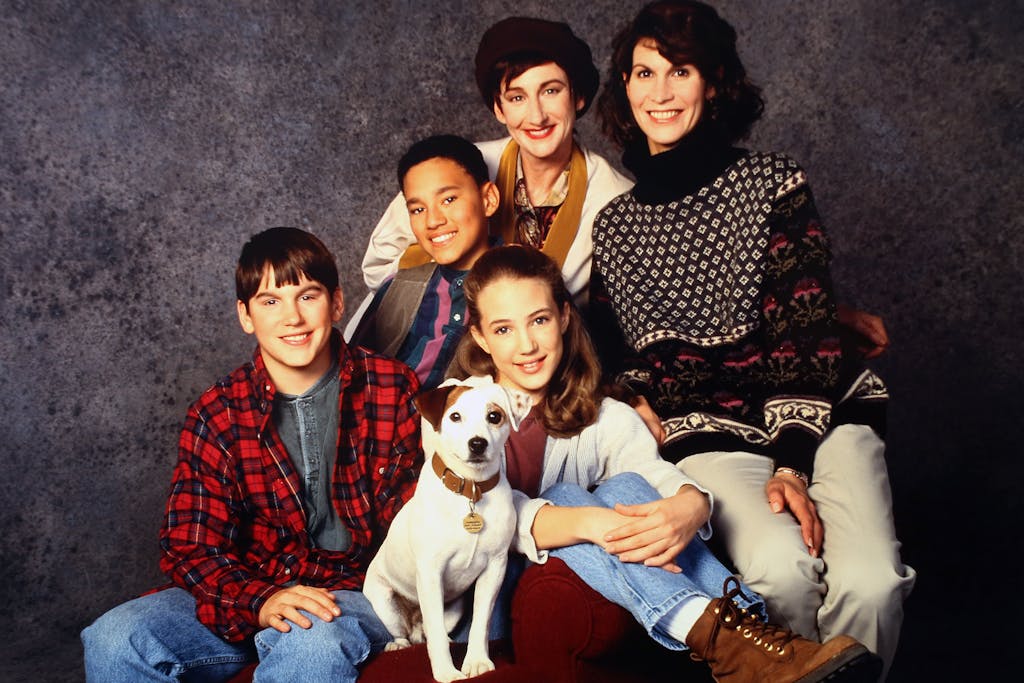
Betty Buckley: We actually had to create a school, hire a teacher for the kids, and outfit a classroom. The ADs [assistant directors] had to be very careful when the kids were on the set and in class and when they had breaks. We had a kind of a kid wrangler . . . who would hang out with the kids because we needed eyes on them at all times. They had basketball and all kinds of stuff, and then the backlot was just a big foresty area. At one point, Adam Springfield [who played David Barnes] got into poison ivy, and that was not good.
Christie Abbott: We all got pulled out of regular school for an entire year. Adam’s a year younger than me, and Jordan is a year older, so we were all in different grades but doing school together. As part of our schooling, we actually made a Wishbone newspaper. We would write articles about the different departments. I remember spending a lot of time with makeup and wardrobe and helping with the wigs and them teaching me how to do weaves and coloring and things like that. We spent a lot of time living in the different worlds that created Wishbone.
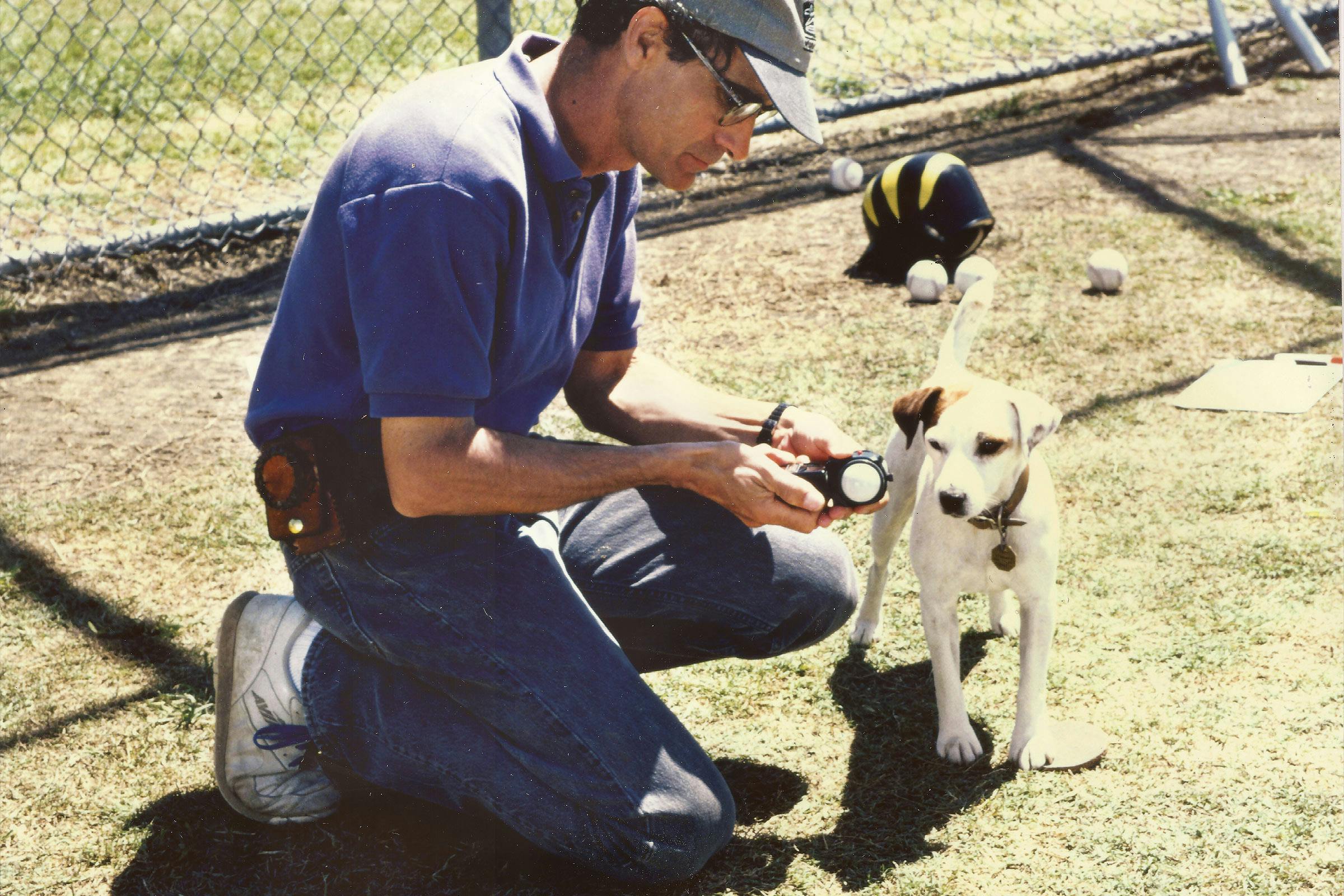
Acting With a Dog
Matthew Tompkins: Once you got into that pipeline and you got the call that you’d been cast in whatever role it was in whatever great novel they were going into, you were immediately shot out of a gun through hair and makeup and wardrobe and, in my case, playing roles like the Monster in Frankenstein, which was six hours in the chair to get into all of those prosthetics and makeup.
You are having to wrap your mind around the fact that you’re acting with a dog. Most of the roles I had I was interacting directly with Soccer, so I had to make the quantum leap of “I’m in this incredible costume, on this incredible set, with this interesting dialogue, working with this crackerjack crew,” and I turn to my scene partner, and it’s a Jack Russell terrier . . . in a costume. But once you accepted that, much in the same way that you willfully accept that Santa Claus is real, then you just treated Soccer like another actor.
Jackie Kaptan: When I got the job, Rick gave me a list of tricks that he wanted. I told him things that I could train Soccer to do, and he picked ten of them. So I taught those ten behaviors because he already had his basic training, like going to a mark, look right, look left, back away. All the stuff you have to have to do movie work and look natural. That took us through, I think, the first five shows. When the series got picked up, Rick gave me a list of all these other things he wanted, and I was thinking, “Soccer’s little brain can only take so much.” He wasn’t a fast learner, but once he knew it, no problem. By the end of the show, he had, like, forty behaviors.
Bert Guthrie was the director of photography on Wishbone: Soccer would hit his marks as accurately as any actor on the show. We worked with people who had years of experience, seasoned people. You tell them, “You’re walking into a tight close-up, you need to hit this mark.” You could rely on Soccer the same way. He would do multiple marks.
Caris Tirpen: I quickly overcame that initial “oh no” when I first saw Soccer. He was so willing to work. When we’d come back from a break, we’d see him trotting into the building; his head would come up and his tail would wag, and Jackie would say, “He knows right where he’s at and that he’s gonna have to work, and he’s really happy to be here.”
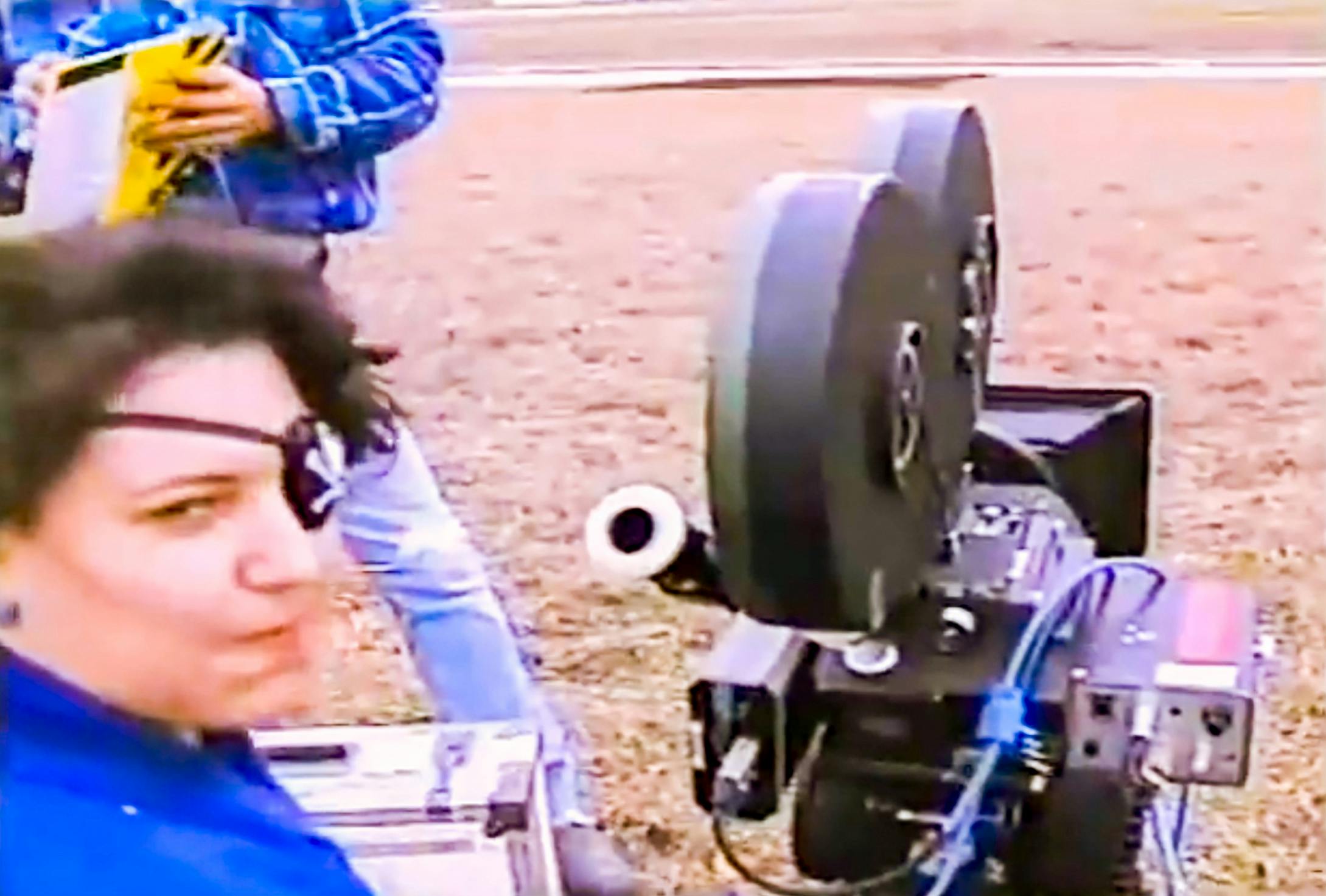
Jackie Kaptan: He was always happy on set. He was like, “Yippee! All these people think I’m wonderful!”
Rick Duffield: We had a rule on the set: Don’t. Touch. The. Dog. We had to keep the dog paying attention to Jackie. She’s in charge, and we can’t distract the dog. But there were times in between shots when Soccer would walk up to somebody, and sometimes he would lean against you. As Joe Nemmers [one of the Wishbone Players] put it recently, “If you could be friendly with the dog, you were a made man. Like mafia made.”
Caris Turpen: Jackie’s relationship with Soccer was so beautiful. She communicated with him so clearly and understood him so well. It was nearly miraculous what Jackie was able to elicit from him and what he was willing to give.
Matthew Tompkins: Soccer had this remarkable catalog of expressions and postures and, I’m a dog man, so I’ll just say feeling that he transmuted in the scene. It also helped that they had Larry on a speaker where you could hear him doing Wishbone’s voice along with you, so you got to play off of Larry, and he got to play off of you. And Soccer would sort of mind-meld like a Vulcan with Larry.
Larry Brantley: When Wishbone portrays those characters in that little dog’s mind, he is portraying that character to the best of his ability. He sometimes pops out of character because he is a dog, after all. He still has a dog’s sensibility. But then he gets back to work as the character because he is driving the story forward.

Hot Dog
To keep Soccer cool during summer shoots, the crew would run an AC line to his kennel between takes.
Caris Turpen: Soccer ended up being in 90 percent of the shots in the show. They only used stunt doubles when it was something like having to run through horses’ legs or be in a battle or jump into a pond.
Larry Brantley: The stunt dogs were a little more sociable than Soccer. We had Phoebe, Slugger, Shiner, Tish, and Bear. Phoebe and I were particularly close. She was just a sweetheart of a dog. I would often seek out opportunities while we were changing setups to go hang out with Phoebe for a few minutes, maybe take her for a walk or just give her a scratch.
PBS Buys Forty Episodes
Rick Duffield: I would occasionally get reports from the attorney negotiating the deal, and he called the week we finished shooting those first five episodes, and he said, “Well, PBS wants forty episodes. And they need ’em by next year.” And I went, “Whoa.” I’m thinking, “Well, there’s 52 weeks in a year. Maybe we can do this.” I called the crew together. Everybody was working on stuff, building sets, wardrobe; the actors were there. I pulled everyone into the big lunch room and said, “I got some news. It might scare everybody, but this is it: we have to do forty episodes, and we’ve got one year to do it.” And people were just ecstatic. The cast and crew were expecting to wrap at the end of the week, but instead we had a big celebration.
Larry Brantley: I did not fully understand, at 24, the amount of time and dedication and effort that it was going to take. I was like, “Wait. I just agreed to work six days a week, thirteen hours a day, for a year? Okay, let’s go.”
Rick Duffield: When we first started, we were solving the show one day at a time. The costuming, the set decoration, the design—everything that had to go into it every single week was daunting.
Stephanie Simpson: No one had ever done this before. No one had ever put a dog in the middle of the Civil War. How do you actually make that happen?
Betty Buckley: Just think for a moment about Barney. There’s a costume, it’s in a studio and multi-camera, so they can run it like a play. Wishbone is in a studio and on location. Two different complete casts for every episode. Two different complete sets for every episode. Two groups of extras. I mean, we had fourteen carpenters and twelve painters.
Larry Brantley: Every week you had an art department and a production design department that had to turn the universe around. One week we’d be in Victorian England, and the next week we’d be in New England. The week after that we’d be with the Aztecs. The amount of stuff they were able to repurpose and still maintain that level of production quality was unbelievable. And also, CG [computer graphics] was brand new at this time, so Caris Turpen and her team were figuring that out.
Caris Turpen: We started off with what I call the old-school techniques, shooting everything on film and then doing digital compositing on the computers: putting all these different layers of film together. It was virtually all live-action combined with other live-action. So we shot a lot of green screen. We did some 3-D, like for the city of London for the opening scene in Oliver Twist. That was done with Reel FX, a company that was very new to it as well.
Betty Buckley: Back then, Reel FX was two guys in a room in Fort Worth. Now it’s a big company that has offices in California and Texas and does animated features. They got the job because, on Oliver Twist, we were trying to fly some birds across the skyline of London and do a little digital crane shot—stuff you can do with TikTok now—but we couldn’t get it to render. It would render all weekend, and then it would collapse. But these guys could do that. The technology was hard because we were on the edge. And, yes, Wishbone was expensive. The technology was just catching up to our ideas. We spent a phenomenal amount of money, thousands of dollars, on a nine-gig hard drive that you can now get on a thumb drive.
Caris Turpen: I started working with a software program called Discreet Logic, which was invented by a couple of guys up in Canada, and they licensed the hardware and the software to different houses. It’s an industry standard now, but we were the first property internationally to use their system at the level we were using it, the very first one in the world.
Stephanie Simpson: I was on set when something was going wrong, and they were like, “We’re losing the light, so we can’t shoot two pages. We need this to happen in one page. What can we do?” There was constantly pressure to come up with solutions, either on very short notice or very little sleep.
Rick Duffield: Honest to God, we were inventing this thing as we went along. There were times I would stand there, and I’d think, “Okay, I got kids. I got period sets. I got stunts. I got effects. What was I thinking?”
Mary Chris Wall: We would shoot five episodes and then go on a week break. We always had a party on that Friday night after wrap. A bunch of the guys got together to form the Wishbone Band, and they played music and we’d all dance. Mo Rocca used to get a Soul Train line dance going.
Betty Buckley: It was like a huge, fun working family. Everyone had this attitude, like, “Send me in, coach.” That Texas can-do attitude played a huge role in that.
Rick Duffield: A lot of babies were born that first year. We used to keep track of the Wishbone babies. How many do we have this month? These were family people. They had kids, and they saw how this show was important for their own families. They saw the value of it, and that gave them a little extra motivation.
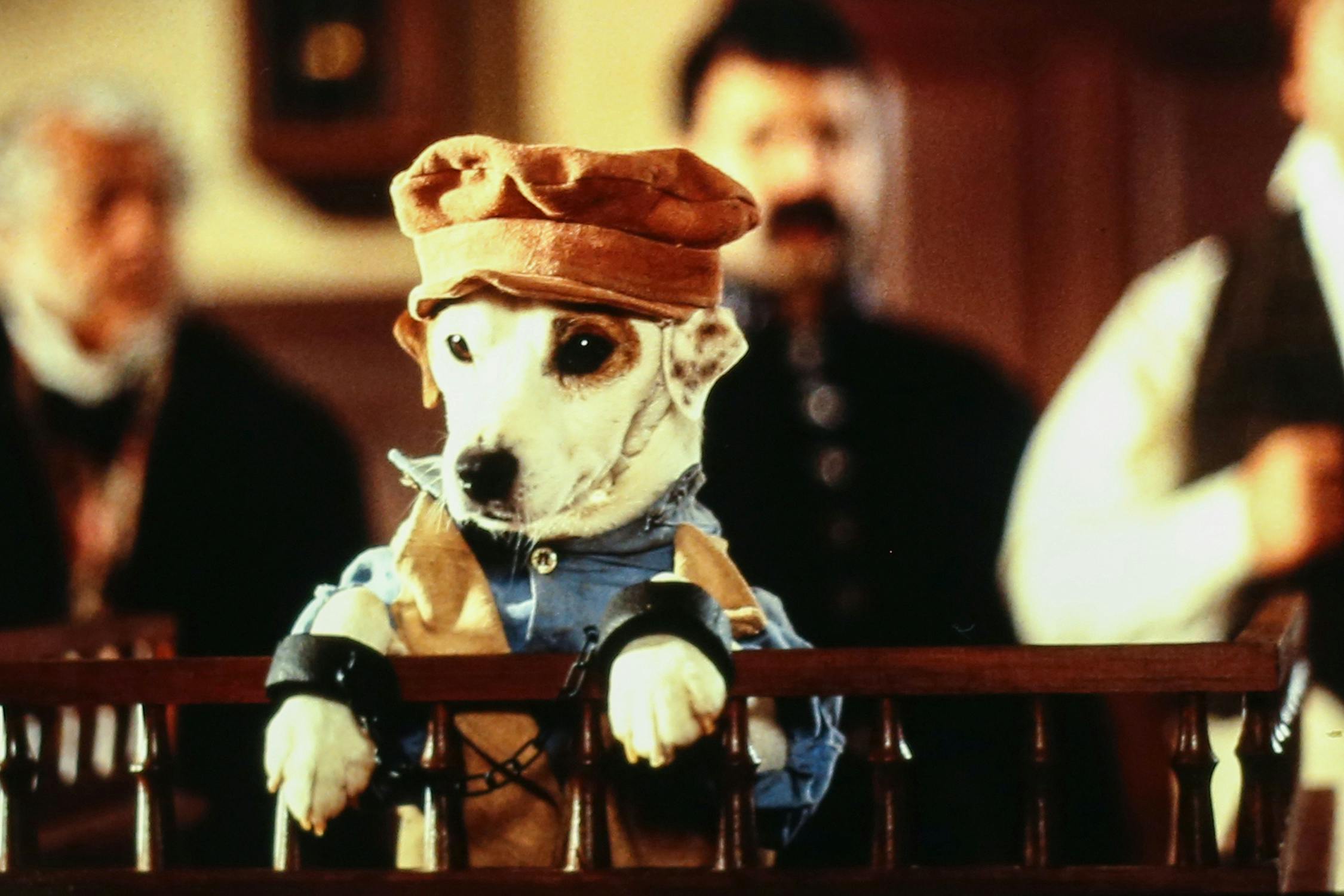
The Show Airs
Mary Chris Wall: The first episode that aired was Tom Sawyer, which we shot as a two-parter midway through filming our forty episodes. Everybody had pretty much hit their stride by then. They started with that one because, first of all, it’s such a great story. And, second, the kid who played Huck Finn was so adorable. We had shot those forty episodes without airing anything, just shooting in a vacuum for a year. There was no sense of audience feedback. We were just this microcosm working on this big thing. The show got some nice reviews, but it takes a while for something to catch fire.
Caris Turpen: We had film professionals from across the world calling the studio and saying, “When did you go to England? When did you go to Greece? We didn’t know that you traveled.” And they were told, “No, that was all a digital composite.” I was really proud that other professionals in the business weren’t able to tell that we had used visual effects. And I was thrilled when we’d get reports back from the local librarian saying, “A ten-year-old came in today and wanted a book on green screen.”
Steven Kavner was a coproducer of Wishbone: It’s hard to sell educational programming, but Wishbone stuck with people. I think we were the kids’ after-school friends. Our show was there for them after school, and they could relate to the kids on Wishbone. And, yes, it was a show for six- to twelve-year-olds, but we got thousands of letters from college kids. We got thousands of letters from their parents saying why they liked it. It wound up crossing so many demographics.
Bert Guthrie: One of the things that I loved the most was [that] I’d be sitting at home with the windows open, and I’d hear the moms all up and down the street, calling out to their kids, “Wishbone’s on!”
Jackie Kaptan: Oh, I couldn’t take Soccer anywhere in Texas. He was very popular there. I’d always carry these paw-graph pictures and give them to kids who would recognize him.
Christie Abbott: I started to notice little kids would stare at me at the grocery store, and at first you’re like, “Why is that kid staring at me?” And then you’d see them pull on Mom or Dad: “Look, look, Wishbone!” And then we started doing appearances, and I remember specifically this one day we had a “Meet the Cast of Wishbone” autograph session at the Galleria in Dallas. And we had a line that took up the majority of the second floor. I mean, there were thousands of people there to see us. That was the moment that I was like, “Whoa, this is a big deal.”
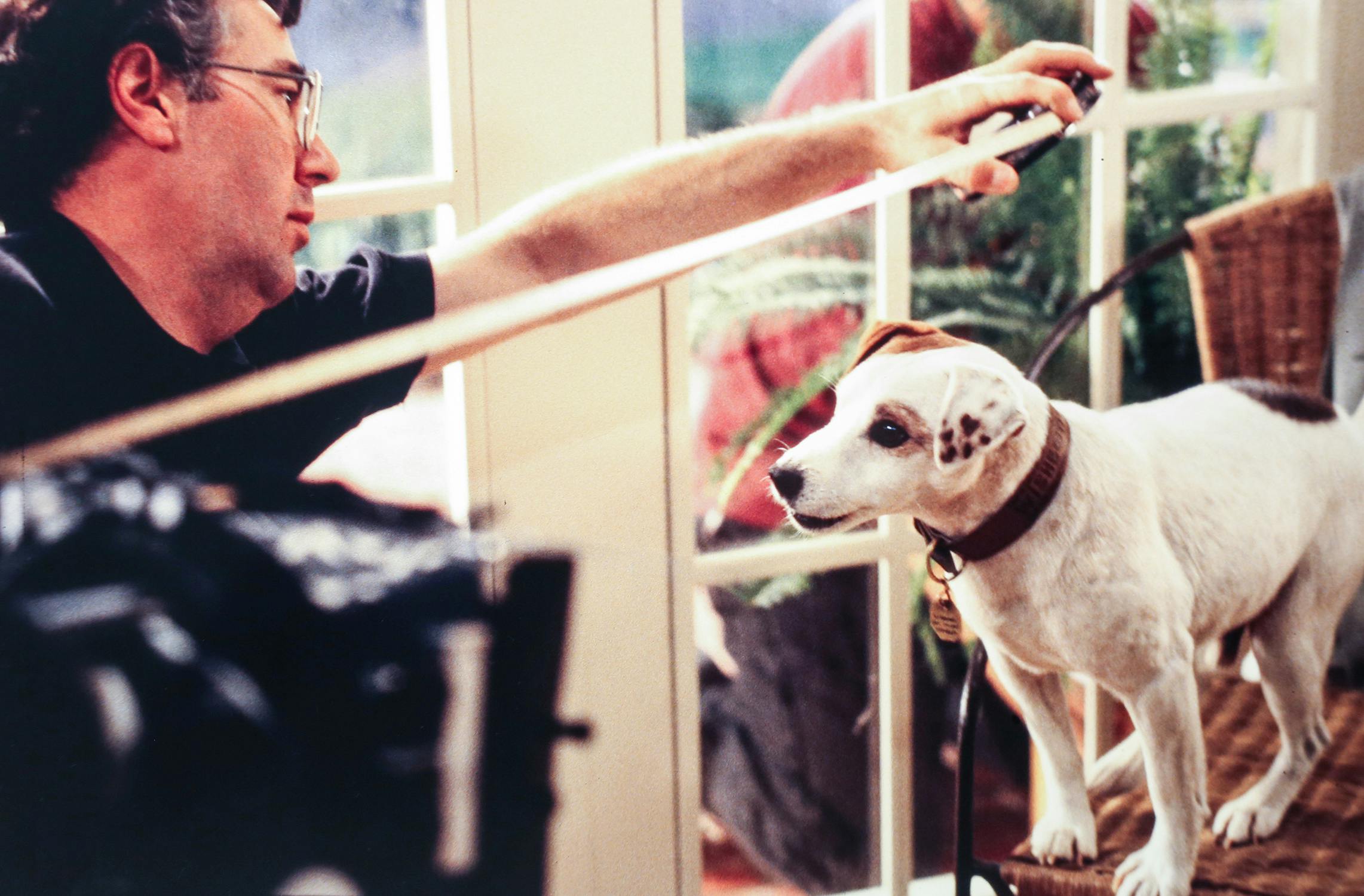
Mary Chris Wall: We would do autograph signings, and the kids lined up. They couldn’t wait to see that dog. And we flew all over the country doing promotions for the Reading Is Fundamental campaign with Target. I would read from the book, and you would have all these kids sitting in front of you who were just transfixed.
Larry Brantley: Target is based in Minneapolis, so they had us do an appearance at Mall of America. We got there a day early, so I decided to go kick around. There’s this huge atrium in the dead center of the mall that’s several stories up, and they had hung this giant Wishbone banner. There were people taking pictures of it. A stage was set up, and there were already people waiting in line. And this was, I don’t know, three o’clock in the afternoon on a Friday. I thought, “Surely they’re not going to let these people stay here overnight.”
The next day, we’re all waiting in the green room. Everybody’s just kind of relaxed. We’re just going to go out, say hi to a few hundred people, sign some autographs, and be gone. Well, the head of security for Mall of America walks in, and he goes, “You guys have officially surpassed the attendance of the opening of Planet Hollywood here.” The room got quiet, and I said, “How many people were at the Planet Hollywood opening?” He goes, “Five thousand.” And I said, “At the risk of having Jackie snatch up the dog and run out of here, how many people are roughly out there?” He goes, “About seven.”
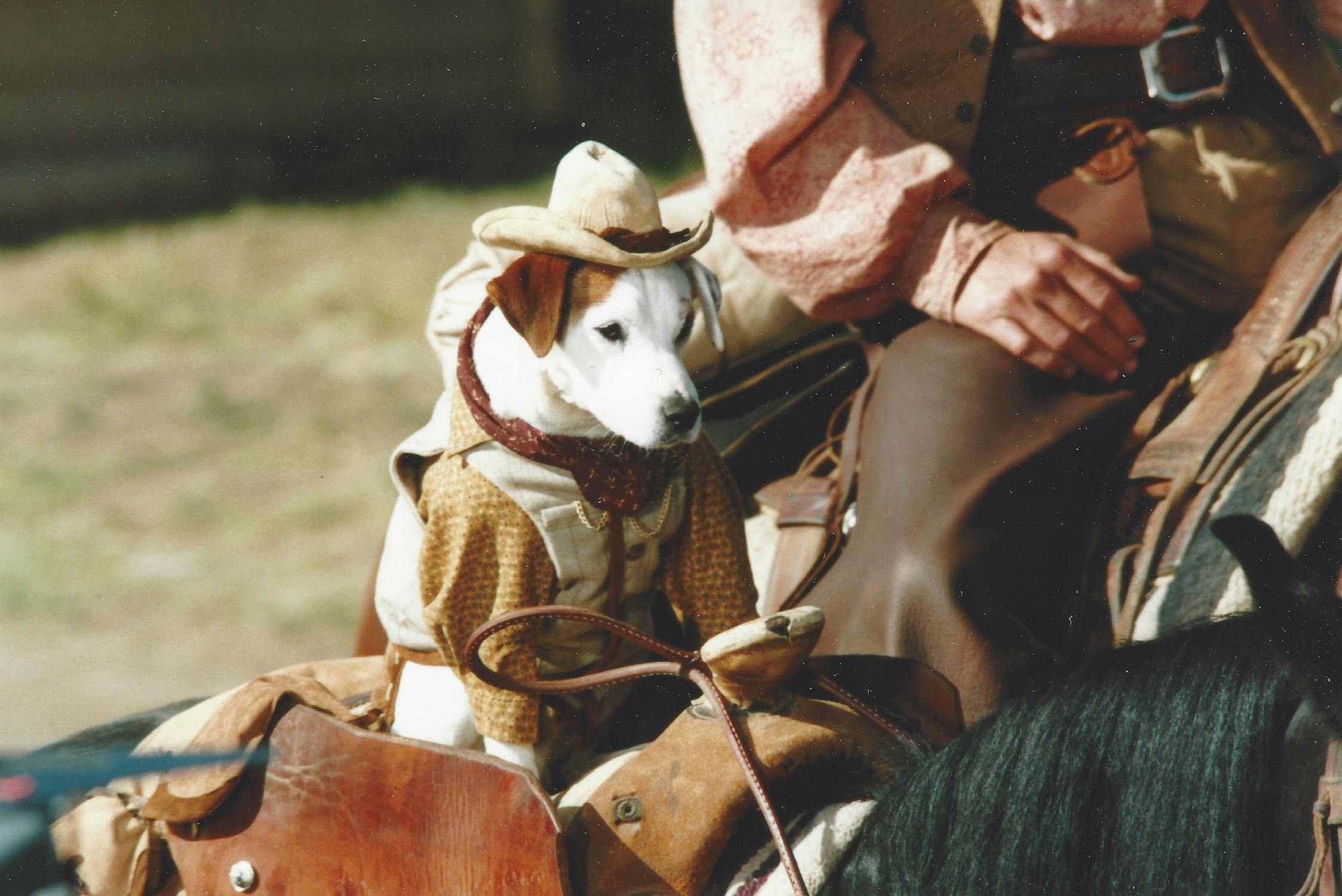
The Second Season
Larry Brantley: By the second season, we were confident. We had figured out the formula for doing a great show.
Steven Kavner: In that second season, we tried adding some celebrities to some of the episodes. Shelley Duvall came and did an episode, and Daryl “Moose” Johnston from the Dallas Cowboys did an episode as well.
Mary Chris Wall: Getting to that second season was so much work. When we did come back, it was so exciting to all be together again. But to only do ten episodes, it was like, “Oh, I wonder what’s happening?” There was a bit of uncertainty during that time.
Caris Turpen: We always knew that Wishbone was rather exceptional because of the costs involved. And that was the liability of the show. Most of its budget went into the art department. I got some money in visual effects, but most was just simple labor and man hours running a 150-person crew. It was unparalleled in the industry because of the expense attached to it.
Rick Duffield: PBS did not fund much of that first season. They paid us $1 million as the license fee for TV rights, but it was some $20 million for those first forty episodes. Dick Leach had backed it. He thought he could make all the money back on stuffed dogs or toys or whatever ancillary product, because that’s how he made so much money off Barney. He just assumed he could just repeat that. He didn’t mind making a deal with PBS because he wanted it on a national network that would be seen by as many kids as possible. So the deal they finally reached, which just blew my mind, was the license fee.
Betty Buckley: Oh, yeah. Barney made a billion dollars. That’s what they kept saying. But in order to build awareness, you need time. We needed to give it a chance for the toys to catch up, because the toys are how children’s programming makes money. In my opinion, it should never have been shown an episode every day. But that’s what PBS did. And so forty episodes in forty days, and then it’s done. Whereas you could have done one show a week and then rerun it. These were very detailed, meticulous shows. They’re not like Mister Rogers’ Neighborhood, which was just Mister Rogers and some puppets, and you can put one on every day.
Steven Kavner: As things went on, it was very hard to make the show affordable. How do you make money with children’s television? Doing a show just for the United States became not cost efficient enough. And that’s why kids have been inundated with animated properties. You can make a cartoon and have people re-loop it in twenty different languages, so to have a live-action show that had so much production value was incredibly unique in a lot of ways—and really expensive.
Rick Duffield: For the second season, PBS did come up with more money. They stepped up to the plate a little better. But PBS was going through a new phase. You go watch PBS now, a kids show, and tell me you see a show with no commercials. It doesn’t exist anymore. But at the time, they were just transitioning to underwriters. And so the big press with PBS was, “Can we get somebody to underwrite this show?” That’s the only way Dick would do it again. We approached Chuck E. Cheese, Frito Lay; we went to a bunch of those meetings. But we never could get there. And after the second season, Dick’s patience for payback was running out.
Matthew Tompkins: Our last great hurrah with Wishbone was the Showtime movie, Dog Days of the West. That was a spectacular sendoff that the Wishbone team gave themselves. It was a month in Santa Fe. We were on this amazing western set out in the middle of nowhere with the full crew and horses and cattle and wranglers. There were massive gunfights and trains, and I remember we got chased off the set by tornadoes pretty regularly.
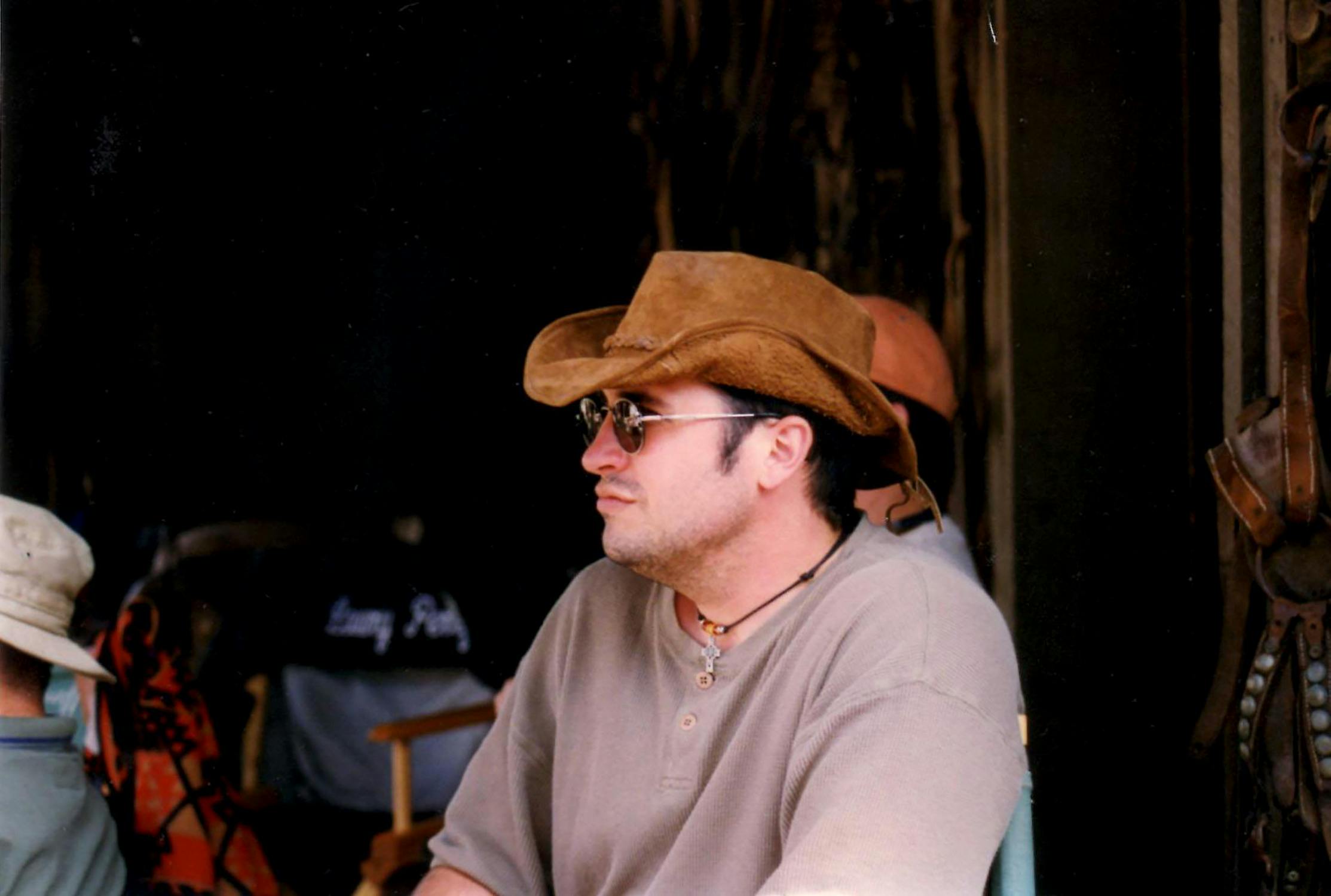
Larry Brantley: We were all super bummed when we came back from making the movie. We still had to shoot a few more contemporary scenes, and the last one we ever shot was the big carnival scene. Rick could have easily said, “Okay, that’s it; you guys did a great job. Thank you so much. Goodbye.” Honestly, most producers probably would have done that. He made a different choice. We finished that big carnival scene, and Rick got up on this stage and addressed everyone. He said, “We’re not coming back. We tried to find the money. We did everything we could. I want you to remember this. You weren’t just a part of something great. You were part of something important. They’re going to remember the stories that you told and the way that you told them.”
Rick Duffield: It was very sad for me. You don’t want to fire your best friends. I felt responsible for it, and I felt like I failed. And I loved all these people. I still do, so much. I felt like I was hurting my own family. Like I was letting them down. It really got to me.
Jackie Kaptan: I didn’t really know when it was going to come to an end. I had no idea it would go five years. But by the time we went down, Soccer was eleven or twelve years old, and I pretty much knew that it was time to retire him. He was still in good shape and good spirits and still wanted to work, but I like to retire dogs when they’re still in good shape, so they can enjoy the rest of their lives. He did his job, and he did it well. He never refused, never one day, to do a shot for me.
Tim Cissell was Wishbone’s music director and composer: I’ve never worked with as talented a bunch of people as I did on that show. And it was heartbreaking when word got around that we were not going to do this anymore. I was like, “What?” I thought we’d be able to do this forever.
Larry Brantley: I know for a fact that I could have retired on that one show. We were never going to run out of source material—ever. I remember we were hanging out on set one day, and I thought, “If I did nothing else for the rest of my career and just did this, I’m pretty sure I’d be okay with it. Because I would be challenged by a new story every week.”
Rick Duffield: We had this tiny window. After the Barney windfall for Lyrick Studios, there was an opportunity to do something like Wishbone, which was unique and different and more cinematic. And then, a few years later, that window closed. The money for children’s television dried up.
The thing is that in the ensuing years from its first broadcast, this show went into over seventy territories around the world. So the broadcast revenue kept coming for years. Years later, after Lyrick Studios was acquired by Hit Entertainment, Wishbone was still making money. At the end of the day, it actually made it up, that $20 million.
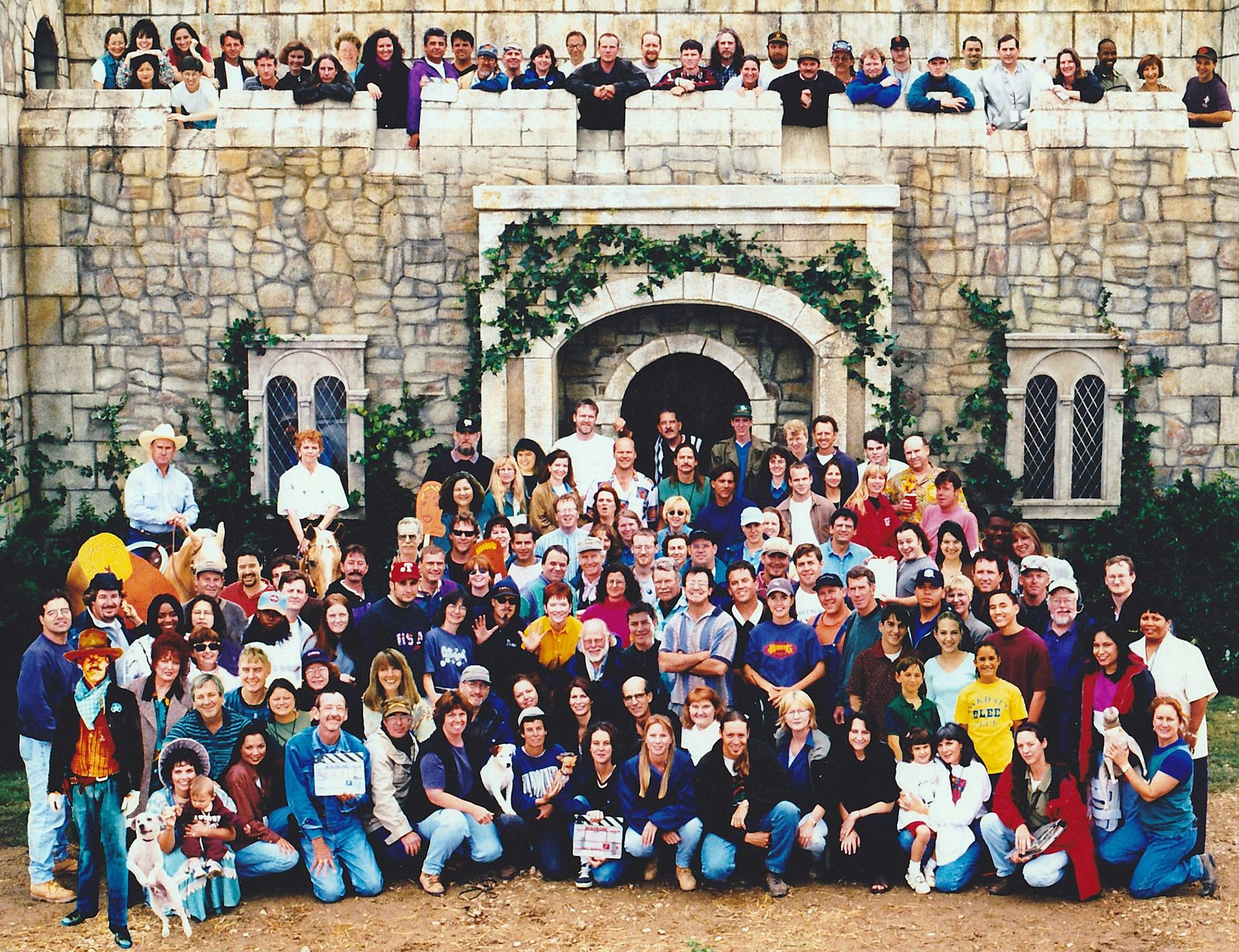
A New Day for Wishbone
Roy Parker is writing the new Wishbone film: I am a nineties kid and a PBS kid. I have very vivid memories of watching [Wishbone] with my mom after school. I came out to L.A. to be a writer. In January of this year, Mattel reached out to me, and they’re like, “We have this property that we’ve been trying to crack for a long time. We’re curious if you have any interest in it.” I opened the email, and there was this PDF, “Here’s everything you need to know about Wishbone.” As soon as I opened that document, I was like, “Oh, I want to write this dog. Whatever we can do to figure it out, I’m going to do.” It slowly all kind of fell into place. When I called my mom to tell her I got the job, that little gasp [from her] was, like, the greatest thing in the world.
The thing that is really important for me to get right is the spirit of the original. Wishbone was very much a show that was like, “We want to help you grow up but not grow up too fast. We want you to know that your imagination is important.” But at the same time, you need to have some of these tools that you can learn from books that help you understand what life is going to be like. That’s the reason that Wishbone as a character is still relevant. He’s this dorky little guy who’s got a big imagination. The show is very funny and very sincere. And that’s what I want the movie to be.
Caris Turpen: A lot of people got very excited when they heard about a movie being developed because they want to see a continuation. I’m talking about the general public. But I think they want to see that type of artfulness behind it rather than cynical merchandising. I don’t have anything attached to it other than “Oh my God, don’t screw it up.”
Larry Brantley: Look, I made my peace with it. We had our moment with that little dog, and I cherished it. I grew from it. I was able to have a really positive, lasting influence on an entire generation of kids who still write me to this day and say, “That show made me a lifelong reader. Now I’m passing that on to my kids.” I can’t think of a better legacy than that. So I wish them all the best, and I hope that they understand what magic they’ve got on their hands.
Jackie Kaptan: Everybody’s asked me if I’m going to come out of retirement. I don’t know that I could do it without Soccer by my side. It would just be sad for me to look down and not see his little face and the devotion that he had. I don’t think I could match that with another dog. Another trainer could probably do it, but not me.
Wishbone’s Enduring Cultural Impact
Bert Guthrie: I expected that Wishbone would have a long life. Once we got the trailer done, and especially after the first few episodes were cut together, I knew that it was going to stick around. I didn’t know that it would be translated into as many different languages as it was. I didn’t imagine that it would go international towards as many markets as it ended up doing. I didn’t imagine that it would stay on PBS for as many years as it did, replaying the same 49 episodes. But it did.
Caris Turpen: The show itself still stands as an icon. And it’s still relevant. Even though the kids’ hairstyles are dated, the concepts underneath the haircuts are universal and timeless. And so it goes on.
Betty Buckley: I teach college. When I wear my Wishbone jacket and my students see the old logo, they’re like, “Oh my God!”
Steven Kavner: You know, we had great support from the teachers and the librarians across the country. I think those were our biggest fans. And we’ve continued to hear from them. They’re the ones who carried the show even when it wasn’t on anymore. They had the posters up of Wishbone or played the videos and shared them with their classes. We owe them a lot of debt for keeping Wishbone alive for 25 years.
Christie Abbott: I still get emails and letters and Instagram and Facebook messages. I got one the other day, an Instagram message from a guy who grew up in a rural area of Louisiana. He didn’t have access to a lot of educational resources, and Wishbone became a big part of his life. He said that it pushed him to expand his knowledge outside of school and to read and be curious about how things work. Now he runs a research department at Vanderbilt University in Nashville. And he wrote to say that he doesn’t know if he would be where he is today without watching Wishbone every day after school.
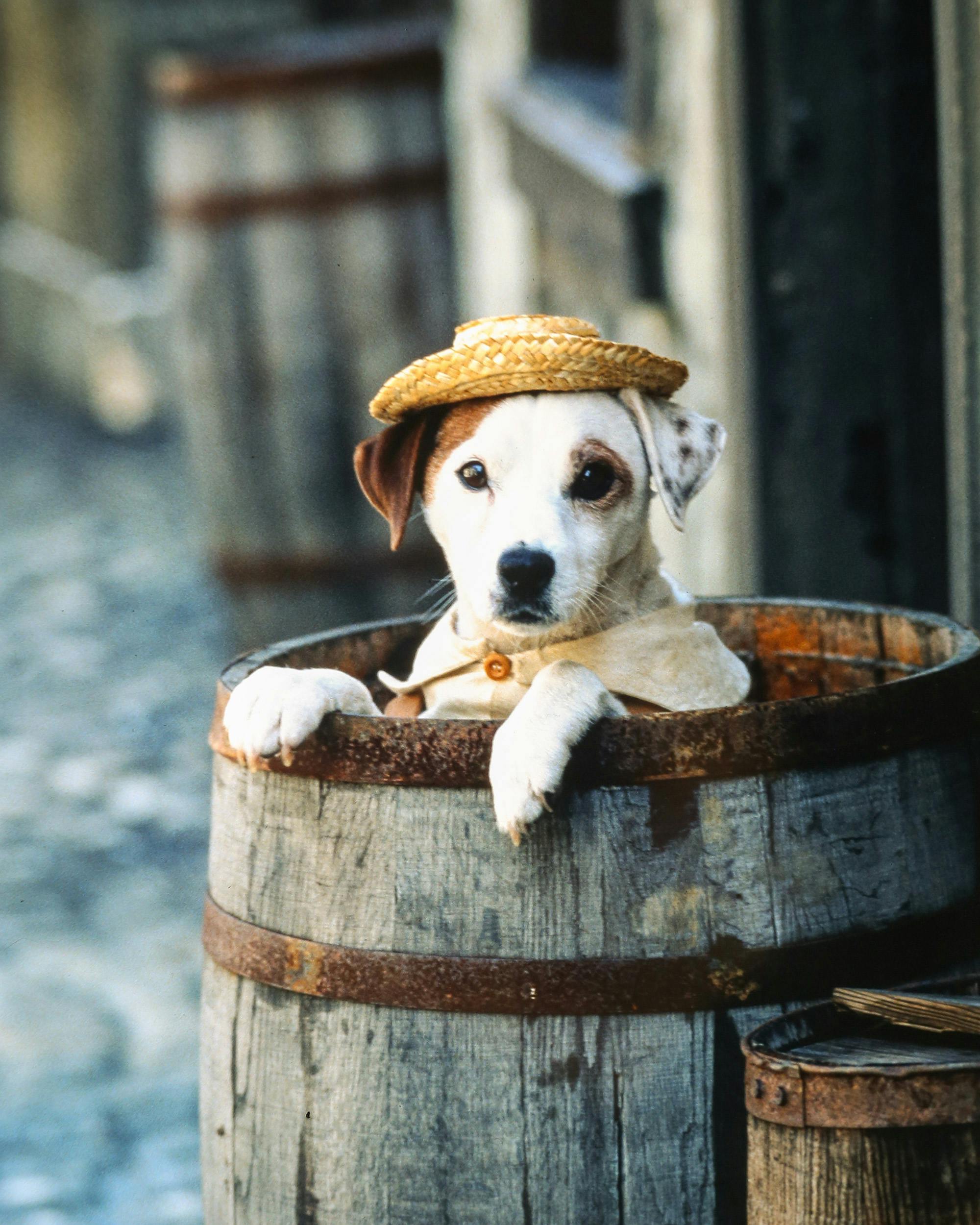
Matthew Tompkins: With 25 years of experience under my belt, I can tell you in retrospect, Wishbone was an absolute rarity. In the ensuing years, there were lots of TV shows that came through Dallas, and the vast majority of us that do this for a living worked on those shows even if we weren’t particularly aligned with the production companies that had come in from Los Angeles or New York or wherever. It was ours.
Christie Abbott: Over the last several months, we’ve [the cast and crew of Wishbone] had some Zoom calls. We’ve kind of reconnected. It’s one of the good things that’s come about from the pandemic. You sort of reach out to things that make you feel good. And we’ve done that. We’re family. Even though we don’t talk every day or see each other, working on a show like that, you never lose that.
Rick Duffield: It was the most fun I’ve ever had working in my life, and after it was over I kind of withdrew from it for a long time. It was hard. But these Zoom calls now, they’re healing me because we’re all reliving the joy of it. Every time I talk to them, it just lifts my spirits. Joe Nemmers [one of the main Wishbone players] was on one of these calls recently, and he said, “You know who the star of the show was? The book.” And that’s true. Everybody understood that’s why we were there. We were in service to the book.
Larry Brantley: The values in Wishbone are universal. That’s why they exist across literature that spans mythology to folklore to early twentieth-century literature. Every single culture down through time has created stories to cope. The beating heart of that show was simply trying to pass that along. The most poignant and pertinent question that anyone has ever asked me is “What’s your story?”
This article originally appeared in the October 2020 issue of Texas Monthly with the headline “Top Dog.” Subscribe today.
Correction 09/17: A previous version of this article listed Caris Turpen’s position as special effects coordinator. It has been amended to reflect that she was the visual effects supervisor.




